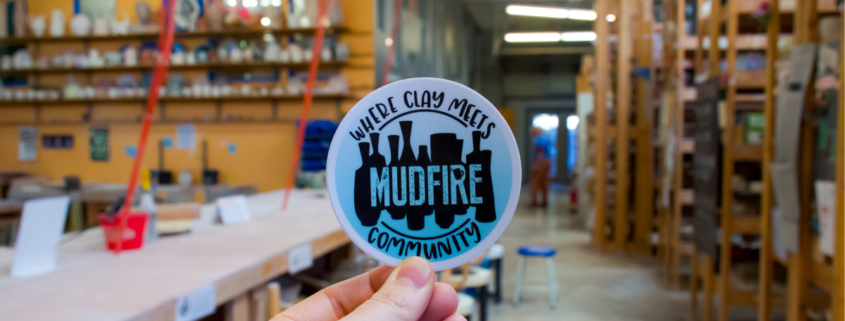Cracking the Science Behind Pottery with MudFire Pottery Studio
By Helen Siaw
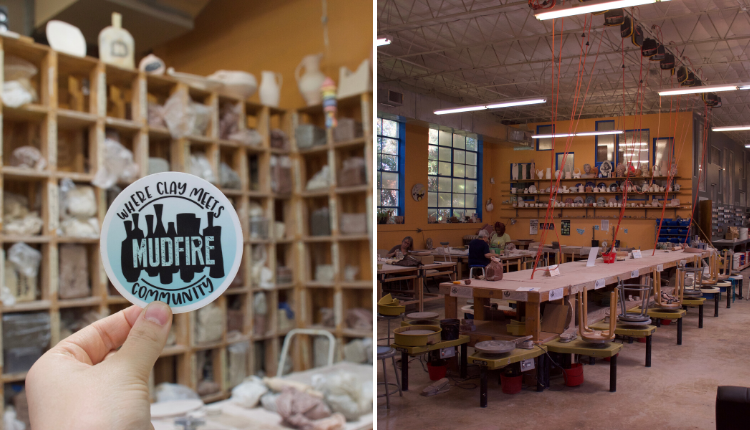
MudFire Studio in Decatur, GA
Two rows of pottery wheels sit at the center of the pristinely clean 8000 square-feet studio, surrounded by shelves of artwork done by the studio’s members, Mudfire Pottery Studio is a go-to pottery studio for the local community. Daphne Ranlett and her partner Deanna Ranlett have been running the studio since 2013. Daphne’s passion for pottery stemmed from a ceramics course in college. “The science behind pottery and the process in crafting it are intriguing.” With a Bachelor of Fine Arts in ceramics from Georgia State University and decades of experience, Daphne is a tried-and-true expert in ceramics.
Clay, water, fire – essential elements in pottery making go back thousands of years. The oldest known ceramic artifact was a figurine constructed about 32,000 years ago in the early Stone Age. In the Bronze Age, the invention of glazes and pottery wheels opened a realm of new possibilities for artists to shape and decorate. Today, local studios like MudFire Pottery Studio provide the community a place to create and innovate these ancient elements.
It All Begins With Clay
Clay contains a mixture of minerals, which determine the temperature needed to transform soft clay into hard ceramics (firing temperature). Kaolinite is one of the major clay minerals. In kaolinite, two minerals are linked together by oxygen atoms to form a sheet-like structure. Similar to how buttercream frosting holds a two-tiered cake upright, molecular interactions between the mineral sheets help to maintain the shape of the clay. When force is applied to the clay these interactions allow the mineral sheets in the clay to slide past each other. This unique property allows it to be shaped and formed by the potter.1
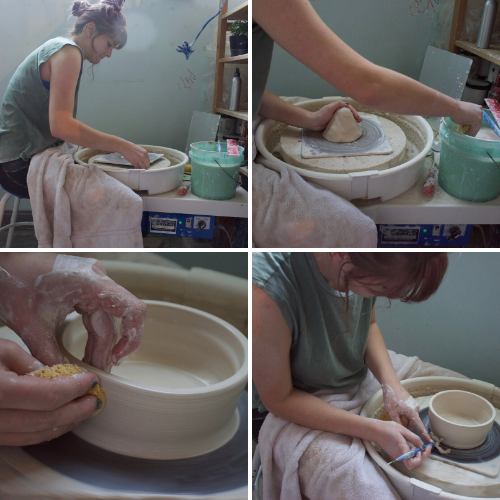
Meredith Bradley, one of the studio’s resident artists, showed us how to shape wet clay on a pottery wheel.
The wet clay can be shaped using a hand building method or with wheel throwing. With hand building, potters frequently use simple tools to create a piece. Wheel throwing utilizes a pottery wheel. This method depends on a balance between the force exerted on the clay when the pottery wheel spins and the friction between the clay and a potter’s hand. “Wheel throwing is all about the rhythm,” Deanna says with a smile.
Once a piece is molded into the desired shape, the pottery is left to dry before firing. “You have to let water evaporate from the clay as much as possible before firing. Otherwise, any water trapped in the clay body will turn into steam at 100oC, and it will burst the clay piece,” Daphne warns.
The air-dried pot is then heated to drive off any lingering water. This heating process transforms the sliding mineral sheets into a stronger network of crosslinked clay particles. From this stage, the clay cannot be reshaped by adding water. Now, layers of ceramic glaze can be applied to this piece, for either decorative or practical purposes such as holding foods.2
Artists’ Experiment
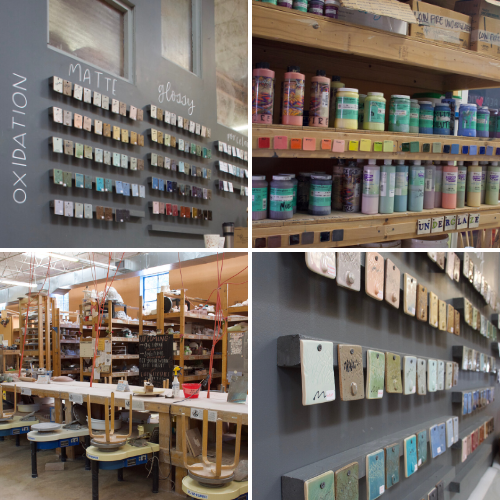
MudFire studio offers an impressive collection of glazes.
Ceramic glaze consists of metal oxides, which give colors to glazes because of their light-absorbing properties.2 As a result of this light absorption property, we see the complementary color. For example, when orange light is absorbed by a metal oxide, we see the blue color. “Cobalt gives a blue color, iron gives a brown color, manganese gives a pink color,” Daphne explains as she shows us the mini ‘laboratory’ they have for preparing glazes.
“We like to experiment and mix our own glazes. We melt each glaze ingredient at a different temperature and observe what will happen. Then we mix different ingredients at different concentrations to see if we can get a different effect.” Through this trial-and-error process, artists at Mudfire Studio created 22 new glazes from scratch.
Bracing the Heat!
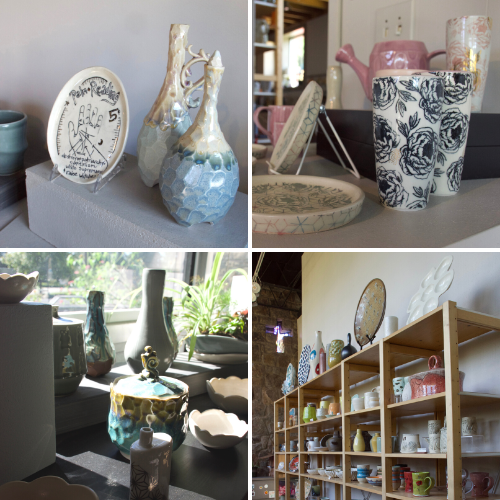
Pottery produced by resident artists are available for sale at the studio.
At the back of the studio is where all the firing happens – in a furnace called a kiln. MudFire carries three different types of kilns: electric, soda, and raku. “An electric kiln is basically an oven with a built-in temperature sensor. There’s not much interaction,” Daphne says. Firing with an electric kiln is similar to baking cookies in an oven. The potter has no control over firing conditions besides the temperature and firing time.
With soda firing, a drop of soda ash solution is added to the large gas furnace at peak temperature it vaporizes immediately and attracts the soda ash to particles in the clay and to the glaze, giving unique patterns. “It’s magical! You have no ability to control where the soda deposits or the final firing pattern. It’s submitting to the will of the firing elements,” says Daphne.
Raku firing, the last method offered at the studio, operates very differently from other firing techniques. The clay piece is first quickly heated up to 1800 oC in the furnace, then immediately placed in a bin with combustible materials such as newspapers, causing simple chemistry to take place. The newspaper reacts with oxygen in the air and generates carbon. The carbon then reacts with the oxygen in glaze’s metal oxides and strips it away, a process known as reduction.3 Raku firing tends to produce thin and fragile pottery with easily chipped glaze surface due to its rapid-firing process.4 “Raku is not food and beverage safe. It’s just decorative,” Daphne says as she walks us through the warm kiln room.
Where Clay Meets Community
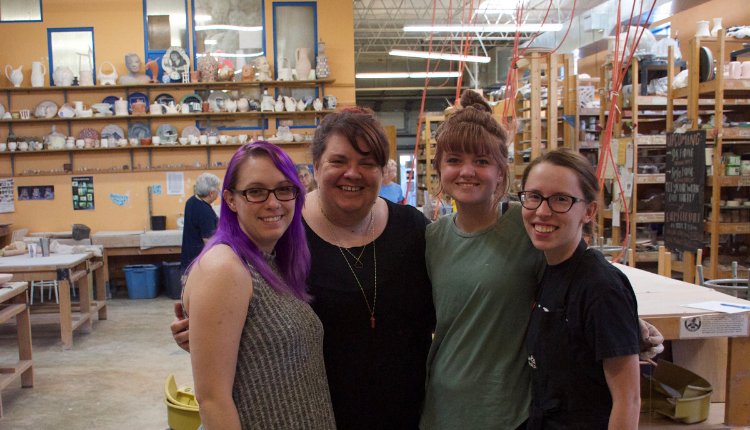
MudFire studio resident artists, Kaitlyn Chipps, Meredith Bradley, Marisa Mahathey, and owner Daphne Ranlett (middle).
Whether you are a pottery expert or a beginner, Mudfire Studio opens their door to everyone. “We aim to create a safe space for expression,” she explains, “Leave your baggage at the door. Come on in and create.” Besides ceramics, Daphne and Deanna value mentorship to young ceramic artists. They work closely with other young pottery business owners and are in the process of setting up professional development workshops. For more information about Mudfire Studio, you can find them on Facebook, Instagram, and Twitter, or visit www.mudfire.com.
“What’s the next step for MudFire after this?” I ask.
“Global domination,” says Daphne.
Thank you so much to Daphne Ranlett and the artists at Mudfire Pottery Studio for taking us through the science of behind pottery! Follow Science ATL on Facebook, Twitter, and Instagram for more Awesome Science of Everyday Life features and other science updates.
References
1 Breuer, S. The Chemistry of Pottery. Education in Chemistry, July 2012, pp 17-20.
2 Bloomfield, L. Techno File: The Chemistry of Color. Ceramics Arts Network Daily, https://ceramicartsnetwork.org/ceramics-monthly/ceramic-glaze-recipes/glaze-chemistry/techno-file-chemistry-color/#.
3 Whitaker, G. Using the Raku Glazing Process to Show Oxidation-Reducation in Chemistry. U.S. Department of Energy, Pacific Northwest Laboratory, pp 6.51-6.59.
4 Branfmann, S. Successful Tips and Techniques for Raku Firing. Ceramics Arts Network Daily, https://ceramicartsnetwork.org/daily/firing-techniques/raku-firing/successful-tips-techniques-raku-firing/.

